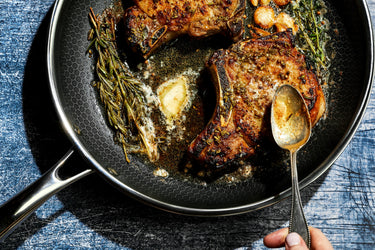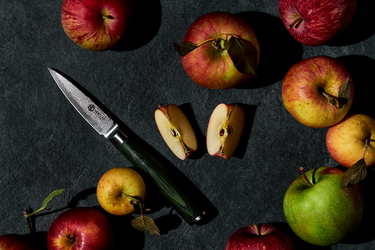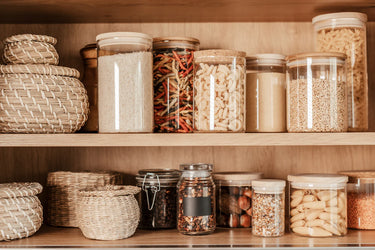How To Make the Perfect Pan Sauce

If you’ve ever finished pan-searing chicken breast or basting a New York strip steak only to realize something is missing, you might be in need of a pan sauce. Pan sauces are a low-risk, high-reward way to infuse more moisture and flavor into your dish. They also have the ability to take your meal in a whole new direction.
Even the most perfectly prepared seared meat could benefit from an added depth of flavor. Rather than letting those excess pan drippings go to waste, you can use them to craft a deliciously simple pan sauce.
Whether you’re looking to show everyone your cooking prowess or just want to take a weeknight meal to the next level, here’s what you need to know about crafting the perfect pan sauce.
What Is Pan Sauce?
Pan sauces are unique in that they’re made in the same pan you’re using to cook your dish. Not only are these sauces delicious, but they can also help make your pots and pans easier to clean when the time comes.
You know those browned bits left over at the bottom of the pan after you’re finished cooking? Those little morsels, also called “fond,” are chock-full of flavor and aromatics, but they have to be romanced a bit before living up to their full potential. With a few extra (but simple) ingredients, you can reignite those ingredients and bring out their delicious potential.
Getting just the right sear on a filet is impressive, but the “wow” factor of spooning a sauce to complete a dish is hard to beat. If you’re cooking for a group, we recommend waiting to do this until everyone is looking. You made it, after all. You deserve to show off a little. It’s no secret that we eat with our eyes first, and this interactive display gets everyone in the mood for food.
Why Do You Need Pan Sauce?
Pan sauces elevate your meal to the next level. Your vegetable sauté might be seasoned just right, but with the right sauce, you can bring out all new flavor combinations. Depending on the sauce recipe you choose, you can better balance your dish with acidity, richness, and any number of other tasting notes.
When Should You Make a Pan Sauce?
Let’s get one thing clear: making a pan sauce doesn’t mean that anything is missing from your dish as it is. Although a pan sauce effortlessly infuses more juiciness and complexity into your meal, this is a bonus more than anything else. Your dish was great before the pan sauce, but it will be unforgettable afterward.
With that in mind, you should make a pan sauce whenever you please. The dish you cook should reflect your tastes and personality as an individual. Other than burning your house down or pairing ketchup with fish, do what you think will enhance the dish.
If you want your pork chops to be imbued with hints (or heaps) of dijon mustard, go for it. If using red wine to simultaneously deglaze the pan and add depth to chicken thighs is up your alley, who are we to stop you?
For a more concrete answer, making a pan sauce can be a great step whenever there are tasty remnants left over at the bottom of your cookware. Even nonstick pots and pans will end up with some leftover ingredients, and these should be fully appreciated.
How Can You Make Pan Sauce? The Step by Step:
Now that you know more than you ever dreamed about pan sauces, here’s how to make one for the ages.
The Ingredients
While a pan sauce is a chance to create your ideal flavor combinations, there are a few mainstays that you should always have at your disposal.
Some ingredients that you might need to make the perfect pan sauce include:
- Red wine or white wine
- Several tablespoons of butter
- Shallots
- Onions
- Chicken stock or chicken broth
- Lemon juice
- Olive oil
- Herb sprigs of your choice (thyme, rosemary, etc.)
- Parsley
Keep in mind that there are plenty of other ingredients you can use to suit your taste, but these will get you well on your way.
The Equipment
In order to create superior flavors, you’re going to need superior equipment. Here are a few of the cookware pieces you’re going to need:
- A 12” HexClad frying pan
- Metal spatula
- Metal whisk
- Measuring cups
The Process
A pan sauce can be made while your protein is still in the pan or after it has been removed. Either way, there is an abundance of flavors to unlock in the pan that otherwise might just be wasted. Work at medium heat, and thinly cut all of your additives (shallots, onions, garlic, capers, etc.) since the goal is for them to cook quickly.
HexClad hybrid pans are metal utensil-safe, meaning you can even slice up your extras in the pan, if you wish. After each ingredient has been added to the pan, give them about a minute to become fragrant.
If you need to deglaze your pan, you can add a few tablespoons of the alcohol of your choice. Keep your thumb over the mouth of the bottle so that you can better control the flow. You can measure it in advance, or you can go by feel and taste if you’re feeling confident.
The alcohol will mostly cook out of the sauce, leaving behind a taste that contains all of the essence with none of the burn. Next, add the stock of your choice. It’s generally best to start with a cup of chicken stock, but you can always use more or less, depending on your preference.
Finally, you’ll want to finish it off with one or two tablespoons of butter. The goal is to create a glossy sauce — not to have excess fat in the pan.
You can customize this process by adding fresh herbs along with the stock. By the way, be sure to taste the sauce before serving. That way, you can add kosher salt or black pepper to taste. Allow the sauce several minutes to reduce and thicken until it can coat the back of a spoon (also called “nappe”).
Pro tip: Pan sauce is lovely over a protein, but it can also pair with a carbohydrate like pasta.
Add Pan Sauce to Your Home Cooking Arsenal
Making the right pan sauce along with your dish is an easy yet effective way to spice up your dish. Mastering this art is sure to pay dividends, so there’s no time to get started like the present.
Sources:
What Does “Deglaze” Mean? | Bon Appétit





